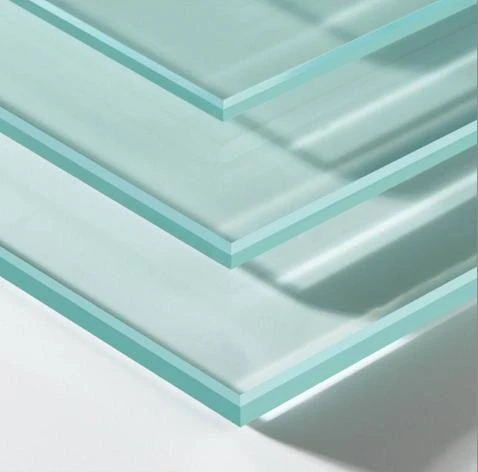Difference Between Regular Glass and Tempered Glass
When it comes to glass, the distinction between regular (annealed) glass and tempered glass is significant, particularly regarding safety, strength, and applications. Understanding these differences is crucial for architects, builders, and homeowners making decisions about glass for various uses.
Regular glass, also known as annealed glass, is produced by the standard glass-making process, where molten glass is cooled slowly in a controlled environment. This method makes it more susceptible to breakage and thermal stress. Regular glass tends to break into sharp shards when shattered, posing a risk of injury. Its strength is adequate for many applications, but it does not withstand significant impact or sudden changes in temperature well.
In contrast, tempered glass undergoes a specialized processing technique that involves heating the glass to high temperatures and then cooling it rapidly. This tempering process relieves internal stresses, resulting in a much stronger material. Tempered glass can be up to five to six times stronger than regular glass of the same thickness. Another critical advantage of tempered glass is that when it breaks, it shatters into small, blunt pieces rather than sharp shards, significantly reducing the risk of injury.
what is the difference between regular glass and tempered glass
The applications for regular and tempered glass vary due to these properties. Regular glass is commonly used in places where safety is less of a concern, such as picture frames, interior glass partitions, or decorative items. However, it is not suitable for high-traffic areas or environments where it may be subject to impact or thermal shock.
Tempered glass, on the other hand, is used in applications that require enhanced safety and strength. It is found in shower doors, glass doors and tables, as well as in automobile windows. Additionally, tempered glass is commonly used in buildings, particularly for facades, as it can withstand high wind loads and temperature fluctuations, making it ideal for both aesthetic and structural purposes.
In summary, the primary difference between regular and tempered glass lies in their production processes and resulting properties. Regular glass is more affordable but lacks the strength and safety features of tempered glass. Meanwhile, tempered glass offers superior durability and safety, making it the preferred choice for high-risk applications. When selecting glass for a project, understanding these differences is essential for ensuring quality, safety, and suitability for the intended use.
 Afrikaans
Afrikaans  Albanian
Albanian  Amharic
Amharic  Arabic
Arabic  Armenian
Armenian  Azerbaijani
Azerbaijani  Basque
Basque  Belarusian
Belarusian  Bengali
Bengali  Bosnian
Bosnian  Bulgarian
Bulgarian  Catalan
Catalan  Cebuano
Cebuano  Corsican
Corsican  Croatian
Croatian  Czech
Czech  Danish
Danish  Dutch
Dutch  English
English  Esperanto
Esperanto  Estonian
Estonian  Finnish
Finnish  French
French  Frisian
Frisian  Galician
Galician  Georgian
Georgian  German
German  Greek
Greek  Gujarati
Gujarati  Haitian Creole
Haitian Creole  hausa
hausa  hawaiian
hawaiian  Hebrew
Hebrew  Hindi
Hindi  Miao
Miao  Hungarian
Hungarian  Icelandic
Icelandic  igbo
igbo  Indonesian
Indonesian  irish
irish  Italian
Italian  Japanese
Japanese  Javanese
Javanese  Kannada
Kannada  kazakh
kazakh  Khmer
Khmer  Rwandese
Rwandese  Korean
Korean  Kurdish
Kurdish  Kyrgyz
Kyrgyz  Lao
Lao  Latin
Latin  Latvian
Latvian  Lithuanian
Lithuanian  Luxembourgish
Luxembourgish  Macedonian
Macedonian  Malgashi
Malgashi  Malay
Malay  Malayalam
Malayalam  Maltese
Maltese  Maori
Maori  Marathi
Marathi  Mongolian
Mongolian  Myanmar
Myanmar  Nepali
Nepali  Norwegian
Norwegian  Norwegian
Norwegian  Occitan
Occitan  Pashto
Pashto  Persian
Persian  Polish
Polish  Portuguese
Portuguese  Punjabi
Punjabi  Romanian
Romanian  Russian
Russian  Samoan
Samoan  Scottish Gaelic
Scottish Gaelic  Serbian
Serbian  Sesotho
Sesotho  Shona
Shona  Sindhi
Sindhi  Sinhala
Sinhala  Slovak
Slovak  Slovenian
Slovenian  Somali
Somali  Spanish
Spanish  Sundanese
Sundanese  Swahili
Swahili  Swedish
Swedish  Tagalog
Tagalog  Tajik
Tajik  Tamil
Tamil  Tatar
Tatar  Telugu
Telugu  Thai
Thai  Turkish
Turkish  Turkmen
Turkmen  Ukrainian
Ukrainian  Urdu
Urdu  Uighur
Uighur  Uzbek
Uzbek  Vietnamese
Vietnamese  Welsh
Welsh  Bantu
Bantu  Yiddish
Yiddish  Yoruba
Yoruba  Zulu
Zulu 

